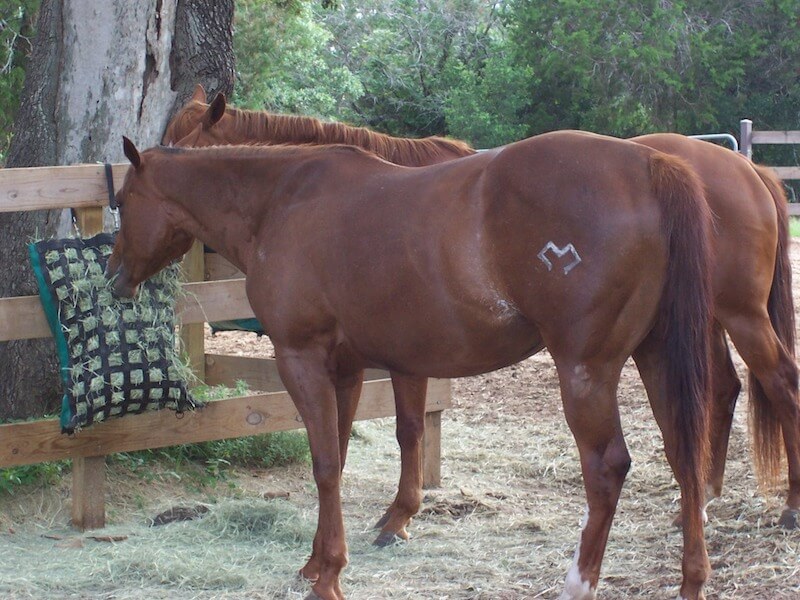Common Cool Season Grasses
by Eleanor Blazer

The equine digestive system is designed to extract nutrients from grass. Horses need long-stem fiber to remain healthy and in a perfect situation horses will graze for approximately 18 hours per day. If the horse owner does not have good pasture feeding hay is the obvious option (there are others, but that’s another column).
Hay is made from grass, legumes or cereal crops that have been mowed, cured and baled. The type of vegetation from which hay has been made can vary based on location, availability and preference of the horse owner.
Let’s take a look at grass hay and the different varieties available.

Grasses are divided into two categories: cool or warm season varieties. Cool season grasses will survive in areas with cold winters, warm season grasses do not. Plants can also be annual and perennial. Annual means the plant completes its entire life cycle in one year and needs to be replanted each year; perennial means it will come back every year with proper maintenance.
Cool Season Grasses
Bluegrass is a very nutritious perennial. It is the most palatable (horses seem to like it best) of all the grasses.
Fescue is a very hardy and drought/ heat resistant perennial that can also be grown in wet soil. Horses do not find it as palatable as other grasses, and it can become infected with an endophyte fungus (mares eating fescue infected with fungus during the last 60 days of gestation may not produce colostrum at foaling time and may give birth to stillborn foals, among other things). Fescue varieties have been developed which are endophyte free.
Orchard grass is a perennial that does not do well in drought. Horses like it best when harvested before it becomes too mature.
Reed canary grass is a perennial that must be harvested early before it becomes stemmy. Horses find it very palatable when harvested correctly. If it’s not harvested before seed heads form, it should be mowed, left to re-grow and the second growth harvested.
Ryegrass comes in both annual and perennial varieties. Ryegrass has the potential to harbor fungi called endophyte (the same type found in fescue). Symptoms of ryegrass endophyte poisoning are staggering, trembling and change of behavior. The nutrient value of ryegrass hay is poor and should not be fed to performance or production animals without supplementation.
Smooth brome grass is a perennial which grows well in a variety of soils. It should be harvested right before seeds head out for maximum nutrient levels. Horses will it eat readily.
Timothy is a perennial and very palatable to horses. It does not do well in high temperatures. It makes an excellent stand of hay. Timothy should be harvested when the seed heads are covered in “velvet” for maximum nutrient levels. The longer the seed head, the lower the nutrient value; and the more coarse and stemmy the hay.
For information about caring for and feeding horses take the online courses “Stable Management” and “Nutrition for Performance Horses” taught by Eleanor Blazer. Earn certification or work toward a Bachelor of Science degree in equine studies. Go to www.horsecoursesonline.com for more information. Visit Eleanor’s web site at www.thewayofhorses.com
Published August 2013 Issue

Eleanor Blazer was raised training and caring for horses. She learned to ride and care for the horses her family bought and sold. Many of these horses required improved nutrition when they arrived for training. Eleanor’s experience and research has benefited both horses and horse lovers in the field of equine nutrition. An equine nutrition consultant, based in Bulverde, Texas, she keeps busy doing equine nutrition consultations, conducting seminars, and speaking to youth groups about horse care and nutrition. Eleanor is the author of the syndicated column The Way of Horses. She has more than 20 years experience helping and being a mentor to those wanting to know how to provide the very best care and nutrition for our special friend – the horse.

